 W
WIn polymer chemistry and materials science, resin is a solid or highly viscous substance of plant or synthetic origin that is typically convertible into polymers. Resins are usually mixtures of organic compounds. This article focuses on naturally occurring resins.
 W
WAgarwood, aloeswood, eaglewood or gharuwood is a fragrant dark resinous wood used in incense, perfume, and small carvings. It is formed in the heartwood of aquilaria trees when they become infected with a type of mold. Prior to infection, the heartwood is odourless, relatively light and pale coloured; however, as the infection progresses, the tree produces a dark aromatic resin, called aloes or agar as well as gaharu, jinko, oud, or oodh aguru, in response to the attack, which results in a very dense, dark, resin-embedded heartwood. The resin-embedded wood is valued in Indian-North Eastern culture for its distinctive fragrance, and thus is used for incense and perfumes. Its name is believed to have first and foremost Sanskrit origin, formed from ‘Aguru’. The aromatic qualities of agarwood are influenced by the species, geographic location, its branch, trunk and root origin, length of time since infection, and methods of harvesting and processing.
 W
WFor the phenylpropene derivative, see apiole.
 W
WAsafoetida is the dried latex exuded from the rhizome or tap root of several species of Ferula, perennial herbs growing 1 to 1.5 m tall. They are part of the celery family, Umbelliferae. Notably, asafoetida is thought to be in the same genus as silphium, a North African plant now believed to be extinct, and was used as a cheaper substitute for that historically important herb from classical antiquity. The species are native to the deserts of Iran and mountains of Afghanistan where substantial amounts are grown. The common modern name for the plant in Iran and Afghanistan is badian, meaning 'that of gas or wind', due to its use to relieve stomach gas.
 W
WAstragalus sarcocolla is a historical shrub or tree from Persia, identified with a species of Astragalus (Papilionaceae), also denoting its balsam.
 W
WBalm of Gilead was a rare perfume used medicinally, that was mentioned in the Bible, and named for the region of Gilead, where it was produced. The expression stems from William Tyndale's language in the King James Bible of 1611, and has come to signify a universal cure in figurative speech. The tree or shrub producing the balm is commonly identified as Commiphora gileadensis. Some botanical scholars have concluded that the actual source was a terebinth tree in the genus Pistacia.
 W
WBalsam is the resinous exudate which forms on certain kinds of trees and shrubs. Balsam owes its name to the biblical Balm of Gilead.
 W
WBalsam of Peru, also known and marketed by many other names, is a balsam derived from a tree known as Myroxylon balsamum var. pereirae; it is found in El Salvador, where it is an endemic species.
 W
WBdellium, also bdellion, is a semi-transparent oleo-gum resin extracted from Commiphora wightii of India and from Commiphora africana trees growing in Ethiopia, Eritrea and sub-saharan Africa. According to Pliny the best quality came from Bactria. Other named sources for the resin are India, Arabia, Media, and Babylon.
 W
WBenzoin or benjamin is a balsamic resin obtained from the bark of several species of trees in the genus Styrax. It is used in perfumes, some kinds of incense, as a flavoring, and medicine. It is distinct from the chemical compound benzoin, which is ultimately derived from benzoin resin; the resin, however, does not contain this compound.
 W
WBoswellia serrata is a plant that produces Indian frankincense. It is also known as Indian oli-banum, Salai guggul, and Sallaki in Sanskrit. The plant is native to much of India and the Punjab region that extends into Pakistan.
 W
WThe cashew tree is a tropical evergreen tree that produces the cashew seed and the cashew apple. The tree can grow as high as 14 m (46 ft), but the dwarf cashew, growing up to 6 m (20 ft), has proven more profitable, with earlier maturity and greater yields. The cashew seed is often considered a nut in the culinary sense; this cashew nut is eaten on its own, used in recipes, or processed into cashew cheese or cashew butter. Like the tree, the nut is often simply called a cashew.
 W
WConvolvulus scammonia, known commonly as scammony, is a bindweed native to the countries of the eastern part of the Mediterranean basin; it grows in bushy waste places, from Syria in the south to the Crimea in the north, its range extending westward to the Greek islands, but not to northern Africa or Italy.
 W
WCopaiba is a stimulant oleoresin obtained from the trunk of several pinnate-leaved South American leguminous trees. The thick, transparent exudate varies in color from light gold to dark brown, depending on the ratio of resin to essential oil. Copaiba is used in making varnishes and lacquers.
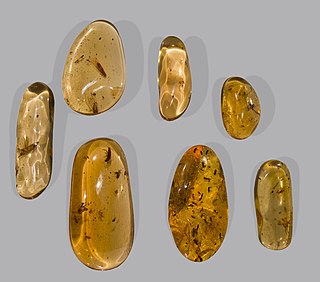 W
WCopal is a name given to tree resin, particularly the aromatic resins from the copal tree Protium copal (Burseraceae) used by the cultures of pre-Columbian Mesoamerica as ceremonially burned incense and for other purposes. More generally, the term copal describes resinous substances in an intermediate stage of polymerization and hardening between "gummier" resins and amber.
 W
WDammar, also called dammar gum, or damar gum, is a resin obtained from the tree family Dipterocarpaceae in India and East Asia, principally those of the genera Shorea or Hopea. Most is produced by tapping trees, however, some is collected in fossilised form on the ground. The gum varies in colour from clear to pale yellow, while the fossilised form is grey-brown. Dammar gum is a triterpenoid resin, containing many triterpenes and their oxidation products. Many of them are low molecular weight compounds, but dammar also contains a polymeric fraction, composed of polycadinene. The name dammar is a Malay word meaning ‘resin’ or ‘torch made from resin’.
 W
WDragon's blood is a bright red resin which is obtained from different species of a number of distinct plant genera: Croton, Dracaena, Daemonorops, Calamus rotang and Pterocarpus. The red resin has been in continuous use since ancient times as varnish, medicine, incense, and dye.
 W
WFrankincense is an aromatic resin used in incense and perfumes, obtained from trees of the genus Boswellia in the family Burseraceae, particularly Boswellia sacra, B. carterii, B. frereana, B. serrata, and B. papyrifera. The word is from Old French franc encens.
 W
WGalbanum is an aromatic gum resin and a product of certain umbelliferous Persian plant species in the genus Ferula, chiefly Ferula gummosa and Ferula rubricaulis. Galbanum-yielding plants grow plentifully on the slopes of the mountain ranges of northern Iran. It occurs usually in hard or soft, irregular, more or less translucent and shining lumps, or occasionally in separate tears, of a light-brown, yellowish or greenish-yellow colour, and has a disagreeable, bitter taste, a peculiar, somewhat musky odour, an intense green scent, and a specific gravity of 1.212. It contains about 8% terpenes; about 65% of a resin which contains sulfur; about 20% gum; and a very small quantity of the colorless crystalline substance umbelliferone. It also contains α-pinene, β-pinene, limonene, cadinene, 3-carene, and ocimene.
 W
WGamboge is a partially transparent deep saffron to mustard yellow pigment. It is used to dye Buddhist monks' robes because it resembles the traditional colour used for the robes of Theravada Buddhist monks. It was this pigment that was used to prove Brownian motion by the physicist Jean Perrin in 1908.
 W
WHash oil, also known as honey oil or cannabis oil, is an oleoresin obtained by the extraction of cannabis or hashish. It is a cannabis concentrate containing many of its resins and terpenes – in particular, tetrahydrocannabinol (THC), cannabidiol (CBD), and other cannabinoids. There are various extraction methods, most involving a solvent, such as butane or ethanol. Hash oil is usually consumed by smoking, vaporizing or eating. Hash oil may be sold in cartridges used with pen vaporizers. Preparations of hash oil may be solid or colloidal depending on both production method and temperature and are usually identified by their appearance or characteristics. Color most commonly ranges from transparent golden or light brown, to tan or black. Cannabis retailers in California have reported about 40% of their sales are from cannabis oils. Hash oil is an extracted cannabis product that may use any part of the plant, with minimal or no residual solvent. It is generally thought to be indistinct from traditional hashish, according to the 1961 UN Single Convention on Narcotic Drugs, as it is "the separated resin, whether crude or purified, obtained from the cannabis plant".
 W
WJapanning is a type of finish that originated as a European imitation of Asian lacquerwork. It was first used on furniture, but was later much used on small items in metal. The word originated in the 17th century. American work is more often called toleware.
 W
WLabdanum, also called ladanum, ladan or ladanon, is a sticky brown resin obtained from the shrubs Cistus ladanifer and Cistus creticus, species of rockrose. It was historically used in herbal medicine and is still used in the preparation of some perfumes and vermouths.
 W
WLac is the resinous secretion of a number of species of lac insects, of which the most commonly cultivated is Kerria lacca.
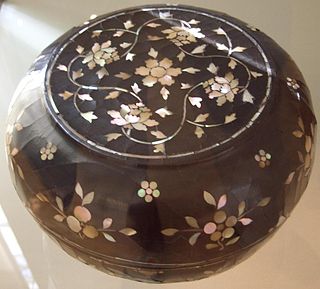 W
WThe term lacquer is used for a number of hard and potentially shiny finishes applied to materials such as wood or metal. These fall into a number of very different groups.
 W
WMastic is a resin obtained from the mastic tree. It is also known as tears of Chios, being traditionally produced on the island Chios, and, like other natural resins, is produced in "tears" or droplets.
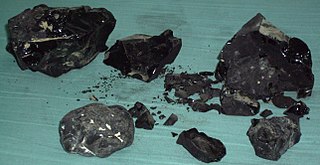 W
WMummia, mumia, or originally mummy referred to several different preparations in the history of medicine, from "mineral pitch" to "powdered human mummies". It originated from Arabic mūmiyā "a type of resinous bitumen found in Western Asia and used curatively" in traditional Islamic medicine, which was translated as pissasphaltus in ancient Greek medicine. In medieval European medicine, mūmiyā "bitumen" was transliterated into Latin as mumia meaning both "a bituminous medicine from Persia" and "mummy". Merchants in apothecaries dispensed expensive mummia bitumen, which was thought to be an effective cure-all for many ailments. It was also used as an aphrodisiac. Beginning around the 12th century when supplies of imported natural bitumen ran short, mummia was misinterpreted as "mummy", and the word's meaning expanded to "a black resinous exudate scraped out from embalmed Egyptian mummies". This began a period of lucrative trade between Egypt and Europe, and suppliers substituted rare mummia exudate with entire mummies, either embalmed or desiccated. After Egypt banned the shipment of mummia in the 16th century, unscrupulous European apothecaries began to sell fraudulent mummia prepared by embalming and desiccating fresh corpses. During the Renaissance, scholars proved that translating bituminous mummia as mummy was a mistake, and physicians stopped prescribing the ineffective drug. Lastly, artists in the 17–19th centuries used ground up mummies to tint a popular oil-paint called mummy brown.
 W
WThe genus Myroxylon was originally described in 1753 by Linnaeus, such description was made using a specimen collected in the province of Cartagena, and named it Toluifera balsamum. The genus Myroxylon was first established by Linnaeus filius in 1781, when he described Myroxylon peruiferum based on a specimen collected by Mutis in South America. Latex from Myroxylon trees is the source of Balsam of Peru and Tolu balsam and composition.
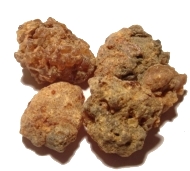 W
WMyrrh is a natural gum or resin extracted from a number of small, thorny tree species of the genus Commiphora. Myrrh resin has been used throughout history as a perfume, incense and medicine. Myrrh mixed with posca or wine was common across ancient cultures, for general pleasure and as an analgesic.
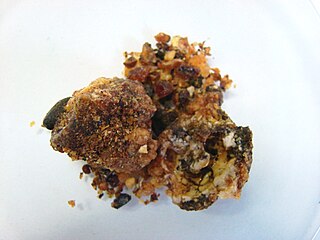 W
WOpopanax is the commercial name of bisabol or bissabol, the fragrant gum resin of Commiphora guidottii. It has been a major export article from Somalia since ancient times, and is called hebbakhade, habaghadi or habak hadi in Somali. It is an important ingredient in perfumery and therefore known as scented myrrh, perfumed myrrh or perfumed bdellium.
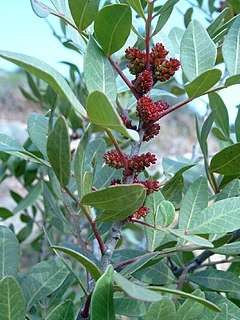 W
WPistacia lentiscus is a dioecious evergreen shrub or small tree of the genus Pistacia, growing up to 4 m (13 ft) tall which is cultivated for its aromatic resin, mainly on the Greek island of Chios.
 W
WResin canals or resin ducts are elongated, tube-shaped intercellular spaces surrounded by epithelial cells which secrete resin into the canal. These canals are orientated longitudinally and radially in between fusiform rays. They are usually found in late wood: denser wood grown later in the season. Resin is antiseptic and aromatic and prevents the development of fungi and deters insects.
 W
WRetinite is resin, particularly from beds of brown coal which are near amber in appearance, but contain little or no succinic acid. It may conveniently serve as a generic name, since no two independent occurrences prove to be alike, and the indefinite multiplication of names, no one of them properly specific, is not to be desired.
 W
WRosin, also called colophony or Greek pitch, is a solid form of resin obtained from pines and some other plants, mostly conifers, produced by heating fresh liquid resin to vaporize the volatile liquid terpene components. It is semi-transparent and varies in color from yellow to black. At room temperature rosin is brittle, but it melts at stove-top temperature. It chiefly consists of various resin acids, especially abietic acid. The term "colophony" comes from colophonia resina, Latin for 'resin from Colophon', an ancient Ionic city.
 W
WSandarac is a resin obtained from the small cypress-like tree Tetraclinis articulata. The tree is native to the northwest of Africa with a notable presence in the Southern Morocco part of the Atlas mountains. The resin exudes naturally on the stems of the tree. It is also obtained by making cuts on the bark. It solidifies when exposed to the air. It comes to commerce in the form of small solid chips, translucent, and having a delicate yellow tinge. Morocco has been the main place of origin of sandarac. A similar resin is obtained in southern Australia from some species of the Australian cypress-like trees Callitris, but the resin has not been systematically collected in Australia.
 W
WShellac (/ʃəˈlæk/) is a resin secreted by the female lac bug on trees in the forests of India and Thailand. It is processed and sold as dry flakes (pictured) and dissolved in alcohol to make liquid shellac, which is used as a brush-on colorant, food glaze and wood finish. Shellac functions as a tough natural primer, sanding sealant, tannin-blocker, odour-blocker, stain, and high-gloss varnish. Shellac was once used in electrical applications as it possesses good insulation qualities and it seals out moisture. Phonograph and 78 rpm gramophone records were made of it until they were replaced by vinyl long-playing records from the 1950s onwards.
 W
WStorax, often commercially sold as styrax, is a natural resin isolated from the wounded bark of Liquidambar orientalis Mill. and Liquidambar styraciflua L. (Hamamelidaceae). It is distinct from benzoin, a similar resin obtained from the Styracaceae plant family.
 W
WTolu balsam is a balsam that originates from South America. It is similar to the balsam of Peru.
 W
WTurpentine is a fluid obtained by the distillation of resin harvested from living trees, mainly pines. Mainly used as a specialized solvent, it is also a source of material for organic syntheses.
 W
WUrushiol is an oily mixture of organic compounds with allergenic properties found in plants of the family Anacardiaceae, especially Toxicodendron spp. and also in parts of the mango tree.
 W
WThe term lacquer is used for a number of hard and potentially shiny finishes applied to materials such as wood or metal. These fall into a number of very different groups.
 W
W